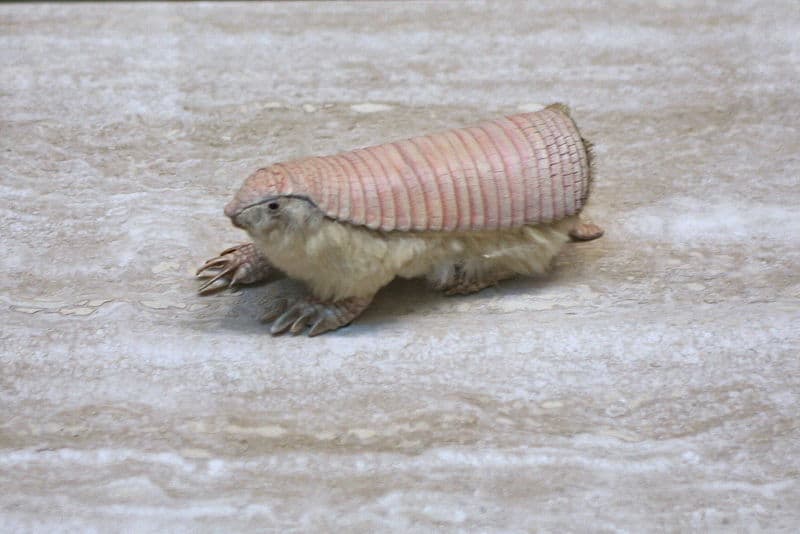
Pink Fairy Armadillo Facts
- Firstly, the awesome Pink Fairy Armadillo ranks as the smallest of all currently known armadillos. Yet that is not the only claim to fame for this remarkable mammal. Quite unfortunately for Nature lovers, it also remains one of the least well known.
- In addition, the IUCN originally listed the truly remarkable creature as Near Threatened. Due to the regrettable lack of sufficient data, however, that status changed to Data Deficient in the year 2008. Furthermore, ongoing observations may change that yet again.
- Surprisingly to most researchers, this amazing animal has proven quite susceptible to stress. Sadly, this unfortunate susceptibility on the part of the animal continues to hamper conservation efforts. Many such efforts involve relocation of the species or altering its environment.
- Fortunately, though, its natural habitat range includes several areas that now enjoy a protected status. This most notably includes Lihue Calel National Park. It also enjoys protective regulations at both the local and national level. Hopefully, these will aid in its survival. Nevertheless, it also remains vulnerable to climate change, like many other species.
Related Articles
Pink Fairy Armadillo Physical Description
The fabulous Pink Fairy Armadillo remains much smaller than its related species. That’s because a mature adult rarely exceeds 4.5 in (11.5 cm) in length. In addition, an average weight among adults only equals about 4.2 oz (120 g).
Its eyes are also small, and its vision remains relatively poor. Furthermore, the silky fur which covers its body usually displays as a yellowish-white. Yet despite its small size, the animal has comparatively long, powerful claws.
But, its remarkably flexible shell obviously remains its most prominent feature. While coloring varies, it often displays a bright pink hue. Yet its shell develops thinner and more flexible than most related species.
Finally, this truly astonishing species displays no noticeable sign of sexual dimorphism. Therefore, both genders of the species present he same astonishing physical appearance. This trait also holds true for related species, as well.
- Kingdom: Animalia
- Phylum: Chordata
- Class: Mammalia
- Order: Cingulata
- Family: Chlamyphoridae
- Genus: Chlamyphorus
- Species: C. truncatus
Pink Fairy Armadillo Distribution, Habitat, and Ecology
Most notably, the Pink Fairy Armadillo has an extremely limited habitat range. It has only been found in a small portion of central Argentina, in South America. But, even in these locations, it only appears in small scattered pockets of population.
Further, within that range, the magnificent creature has several types of habitat it prefers. These highly varied types include dunes, sandy plains, and grasslands. But outside of these environments the animal does not do well.
It also represents a primarily burrowing, and nocturnal animal. Further, it spends most of its time underground. It also appears to be extremely vulnerable to even small changes in its habitat, requiring great stability.
In addition, the fascinating animal currently remains classified as a generalist insectivore. Most commonly, it feeds on various larvae and ants. However, it will eat leaves, worms, and snails if these cannot be found.
Unfortunately, the species faces a number of threats, not all of them natural. In addition to serving as prey for wild boars, it also falls to domestic dogs and cats. Finally, habitat loss poses an extreme threat, as its already limited range is converted into farmland.
Species Sharing Its Range
Check out our other articles on 7 Astounding Polar Creatures, Icicle Mushroom, Spider Tailed Viper, Great Hammerhead Shark, Prince Edward Island, 5 Magnificent Reptiles of Mexico
